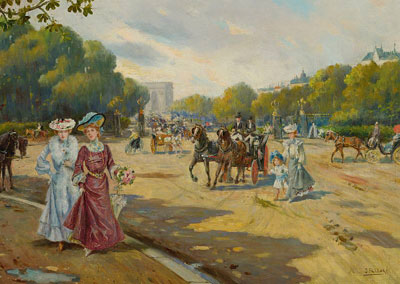 I don’t remember when the expression was coined but it started to appear a bit after the book Return to Order was published. I would find myself in situations where I could observe obvious examples of the book’s theoretical principles in daily life. When I would describe these incidents to others, people very naturally started calling them “Return to Order moments.”
I don’t remember when the expression was coined but it started to appear a bit after the book Return to Order was published. I would find myself in situations where I could observe obvious examples of the book’s theoretical principles in daily life. When I would describe these incidents to others, people very naturally started calling them “Return to Order moments.”
“Return to Order moments” are not events that you can plan. In a very organic manner, they just happen. When you least expect it, a principle of the book sort of jumps out at you. They can be negative or positive incidents. Sometimes, they deal with the frustrations of our hectic, high-tech world. At other times, they involve a touching display of veneration and respect for traditional values.
Is Technology Ruining Your Life? Take A Quick Quiz To Find Out By Clicking Here.
One of the first such moments happened when some friends and I were visiting Charleston, South Carolina while promoting the book in that lovely city. As any good visitor to the city should do, we took advantage of our stay to stroll around the historic downtown and admire its many beautiful ante-bellum houses and cobblestone streets.
The old city is almost a living exhibit of organic society described in the book Return to Order. The design, color, and decoration of each house display the vivid personality of the family that built it. Almost all played some role in the history of the city, the state, or, in some cases, the nation. Some houses are still owned by the descendants of the original builder. I was enthralled by the whole scene.
We stopped for lunch at Poogan’s Porch, one of the city’s excellent restaurants. This particular place had originally been a Civil War-era house, and was very well preserved. As we were conversing over plates of traditional South Carolina’s low country cuisine, two ladies in full Victorian dress entered the room and sat down.
We were convinced that they were local ladies working as tour guides for one of the many house museums. One lady seemed to confirm this impression by answering her i-phone at the table in a very un-Victorian manner. I commented with my friends about the contradiction between her dress and the i-phone.
And then the “Return to Order moment” happened.
Apparently, the lady overheard my commentary and after finishing her call came over to the table and introduced herself. She then apologized for being on the phone in her Victorian dress. As if to reestablish her credibility, she explained that there was a pressing matter at home that forced her to answer the phone.
As it turns out, they were not tour guides or even locals, but members of a Victorian society visiting from Minnesota. As part of their efforts to preserve nineteenth century culture, they were touring Charleston dressed in authentic Victorian clothing. These ladies were the real thing who went beyond the externals and desired to value and live the principles of that era.
As we spoke, others started to listen in – these restaurants are all very cozy places. Someone at our table asked for a picture to remember the moment.
The flash set off something almost more interesting than the ladies themselves. Soon, other people in the restaurant were asking for pictures. Men and women in shorts, untucked T-shirts and flip-flops were enchanted with the two ladies and literally lined up to take pictures with them.
The whole affair got me thinking. As mentioned in Return to Order, many people are looking beyond the frenetic intemperance of modern life and have longings for order and authenticity. The incident at Poogan’s showed me that, much more than we realize, Americans and, surprisingly, young Americans have an attraction and admiration for traditional culture, customs, ways of dress, food and regional cuisine and architecture. The incident was a touching confirmation of passages from Return to Order.
As the book circulates, I have found that I am not the only one with “Return to Order moments.” Many friends and readers have told me of their own similar unplanned moments when they could see the book’s principles in their daily lives.
moments.” Many friends and readers have told me of their own similar unplanned moments when they could see the book’s principles in their daily lives.
I suspect that such moments can be found everywhere. I welcome the stories of your own “Return to Order moments.” They are an impressive confirmation that a return to order is not only necessary, but possible.
You can send your stories to: John Horvat at jh1908@aol.com.
Related Articles: We Must Resist the Temptation to Secession,
Restoring the human element in society


